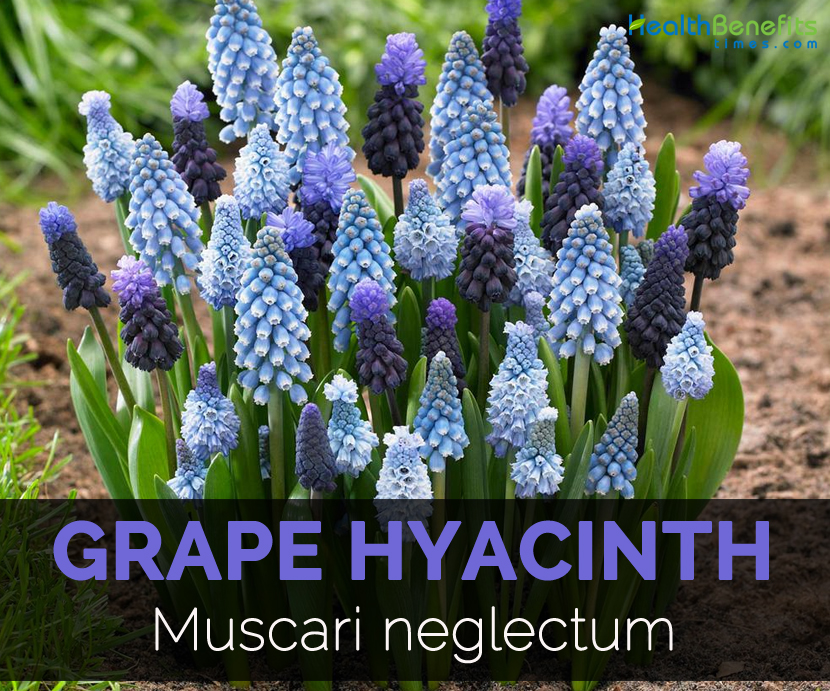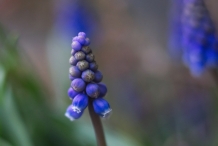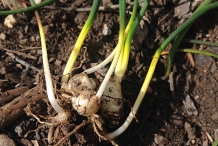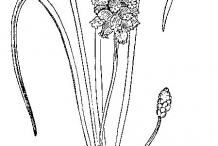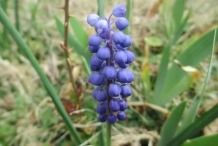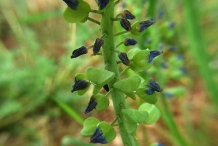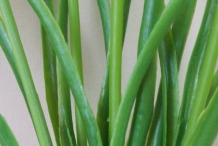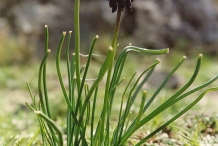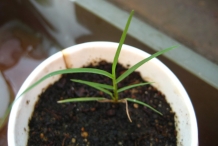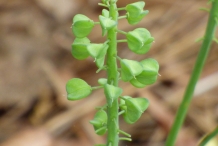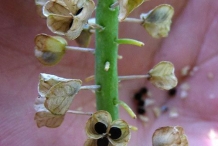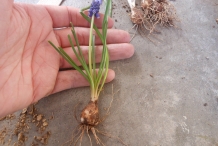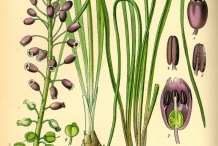Plant
The plant is herbaceous which grows to 25 cm with 2-3 by 2-2.5 cm ovoid bulbs covered with dark brown tunic. Leaves are linear to lanceolate measuring 5 to 35 cm long and 0.25 to 0.75 cm wide. Scapes are 25 cm long. Flowers are blue to purplish on 1 to 5 mm nodding pedicles. Sterile flowers are smaller and paler in comparison to fertile ones. Perianth tube is ovoid to oblong-urceolate or cylindric measuring 3 to 7 mm. The plant bears capsule as a fruit which is broadly ovate to orbicular, 5-9 × 8-10 mm having tip rounded or shortly emarginated.
How to Eat
- The blue flower buds and bulbs are used in Mediterranean cuisine.
- Flower buds and flowers are pickled in vinegar.
References:
https://www.itis.gov/servlet/SingleRpt/SingleRpt?search_topic=TSN&search_value=503892#null
https://www.cabi.org/isc/datasheet/115673
https://en.wikipedia.org/wiki/Muscari_neglectum
https://plants.usda.gov/core/profile?symbol=MUNE
Comments
| Grape Hyacinth Quick Facts | |
|---|---|
| Name: | Grape Hyacinth |
| Scientific Name: | Muscari neglectum |
| Origin | It is inherent to Southwestern Asia and the Mediterranean region. |
| Shapes | Broadly ovate to orbicular, 5-9 × 8-10 mm |
| Name | Grape Hyacinth |
|---|---|
| Scientific Name | Muscari neglectum |
| Native | It is inherent to Southwestern Asia and the Mediterranean region. |
| Common/English Name | Blue Bottle, Common Grape Hyacinth, Cipollini, Edible Muscari, Grape Hyacinth, Hairy Muscari, Musk Hyacinth, Muscari, Nutmeg Hyacinth, Starch Hyacinth, Southern Grape Hyacinth, Tufted Grape Hyacinth, Starch grape hyacinth |
| Name in Other Languages | Finnish: Terttuhelmililja; French: Muscari À Grappe, Muscari Négligé, Muscari En Grappe, Muscari Oublié, Ail Des Chiens; German: Weinbergs-Traubenhyazinthe, Weinbergs-Träubel, Übersehene Traubenhyazinthe; Hungarian: Fürtös Gyöngyike; Italian: Muscari Ignorato, Lampascione; Portuguese: Enfuste; Spanish: Agüelicos, Azulete, Ajo De Perro, Cebolla De Lagarto, Cebollica De Milano, Chapín De Reina,Cebollita De Milano, Clavos De Dios, Frailes, Espartillo, Gatos, Guitarrillos, Hierbas De Los Amores, Hierba Del Querer, Jacinto Racimosa,Jacinto, Jacinto Racimoso, Jacintos, Jacinto Silvestre, Macandil, Lloricas, Moras, Moro, Nazarenos, Nazareno, Pajarillos, Nazarones, Penitents; Turkish: Dağ Sümbülü; Welsh: Clychau Dulas; Catalan: All de bruixa, Calabruixa petita; Denmark: Liden perlehyacint |
| Plant Growth Habit | Herbaceous plant |
| Soil | Well-drained, moderately moist sandy |
| Plant Size | 25 cm |
| Leaves | Linear to lanceolate, 5 to 35 cm long, 0.25 to 0.75 cm wide |
| Flowering Season | Early spring to mid-summer |
| Flower | Purple to blue, urn-shaped |
| Fruit shape & size | Broadly ovate to orbicular, 5-9 × 8-10 mm |


